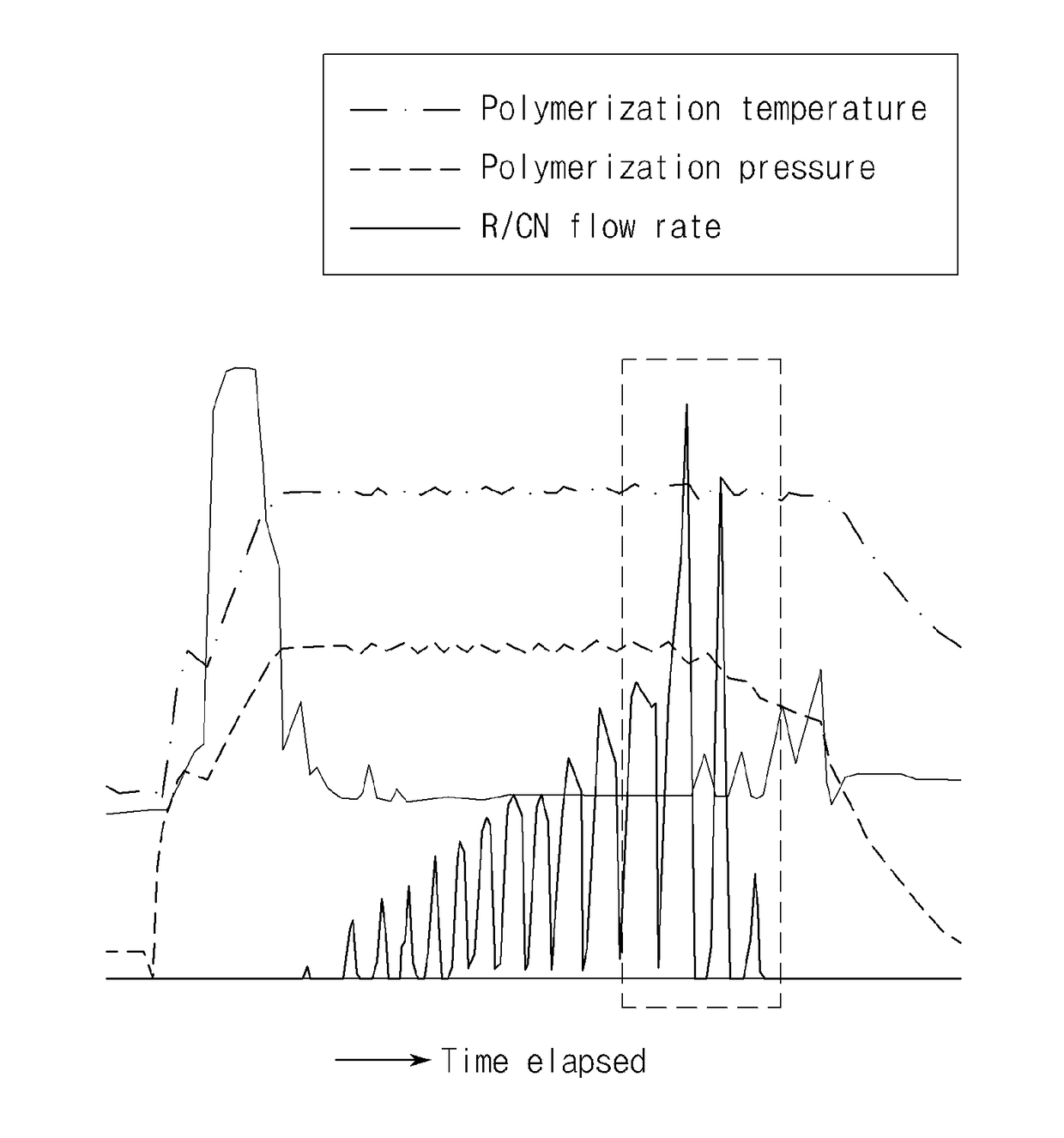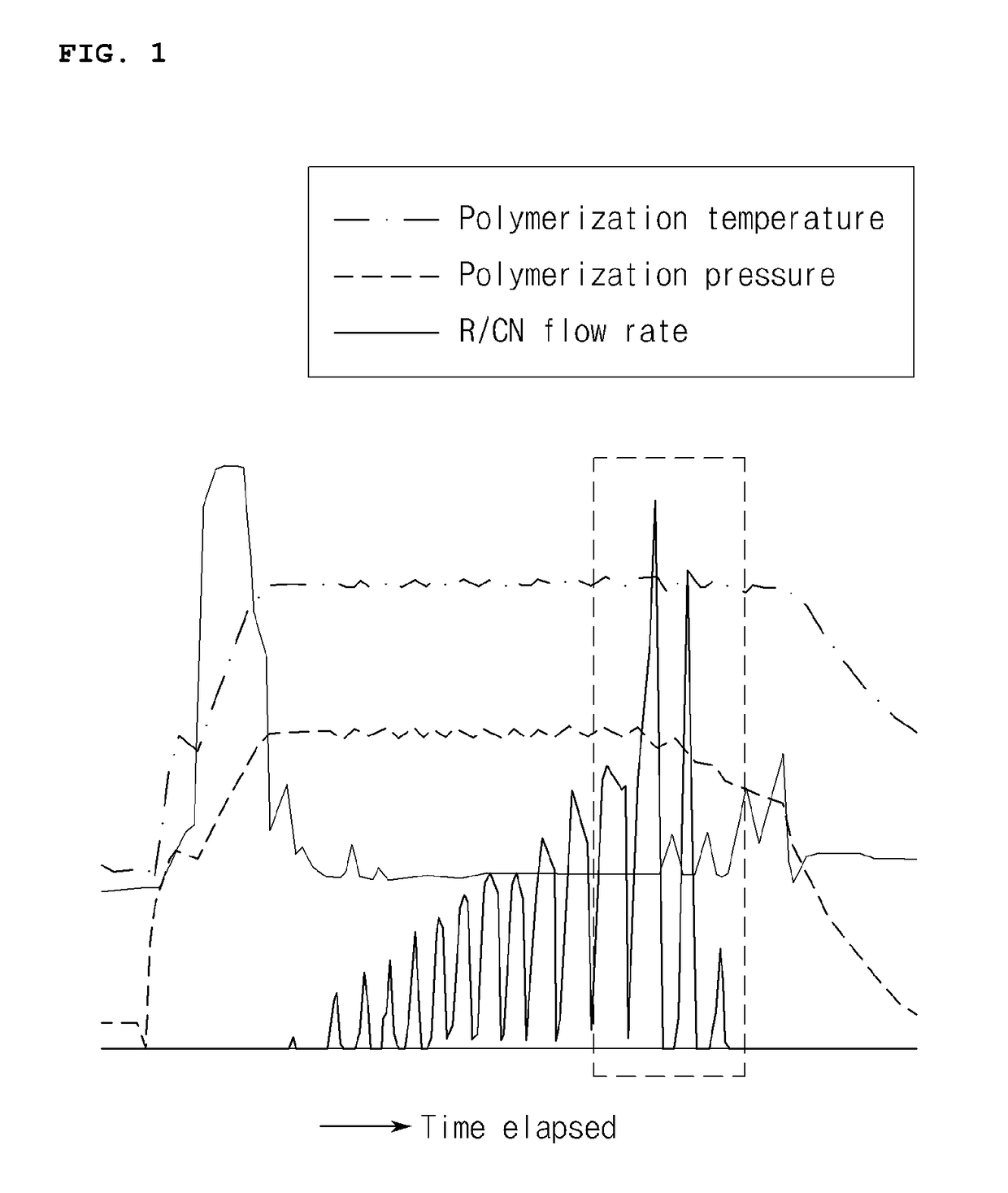METHOD FOR PREPARING VINYL CHLORIDE-BASED POLYMER, AND VINYL CHLORIDE-BASED POLYMER PREPARED THEREBY (As Amended)
a technology of vinyl chloride and polymer, which is applied in the field of method for preparing a vinyl chloride-based polymer thereby, can solve the problems of increasing reaction time, deteriorating thermal stability, and relatively low activity, and achieves uniform distribution of heat removal flow rate, excellent physical properties, and high polymerization conversion rate
- Summary
- Abstract
- Description
- Claims
- Application Information
AI Technical Summary
Benefits of technology
Problems solved by technology
Method used
Image
Examples
example 1
[0069]To a polymerization reactor having a capacity of 100 L and equipped with a reflux condenser, 100 parts by weight of a vinyl chloride-based monomer and 130 parts by weight of deionized water were added. Then, at the time of temperature rise in the polymerization reactor, 0.055 parts by weight of a 1a polyvinyl alcohol having a degree of saponification of 80 mol %, 0.013 parts by weight of a 1b polyvinyl alcohol having a degree of saponification of 72 mol %, 0.004 parts by weight of a second polyvinyl alcohol having a degree of saponification of 55 mol %, and 0.013 parts by weight of mecellose (mecellose, gel point: 61° C., hydrophobic group content=38 wt % (the degree of substitution with methoxy groups 28 wt %, the degree of substitution with hydroxypropyl group 10 wt %)) were added thereto. In addition, 0.05 parts by weight of t-butyl peroxyneodecanoate (BND) was added as a polymerization initiator thereto, and then air and nitrogen were removed by de-pressuring and stirring ...
example 2
[0070]A vinyl chloride-based polymer was prepared by the same method as described in Example 1 except that polyvinyl alcohol having a degree of saponification of 78 mol % was used as a 1a polyvinyl alcohol instead of polyvinyl alcohol having a degree of saponification of 80 mol %.
example 3
[0071]A vinyl chloride-based polymer was prepared by the same method as described in Example 1 except that 0.05 parts by weight of polyvinyl alcohol having a degree of saponification of 84 mol % was used as a 1a polyvinyl alcohol instead of polyvinyl alcohol having a degree of saponification of 80 mol %.
PUM
| Property | Measurement | Unit |
|---|---|---|
| temperature | aaaaa | aaaaa |
| particle diameter | aaaaa | aaaaa |
| apparent specific gravity | aaaaa | aaaaa |
Abstract
Description
Claims
Application Information
 Login to View More
Login to View More - R&D
- Intellectual Property
- Life Sciences
- Materials
- Tech Scout
- Unparalleled Data Quality
- Higher Quality Content
- 60% Fewer Hallucinations
Browse by: Latest US Patents, China's latest patents, Technical Efficacy Thesaurus, Application Domain, Technology Topic, Popular Technical Reports.
© 2025 PatSnap. All rights reserved.Legal|Privacy policy|Modern Slavery Act Transparency Statement|Sitemap|About US| Contact US: help@patsnap.com



